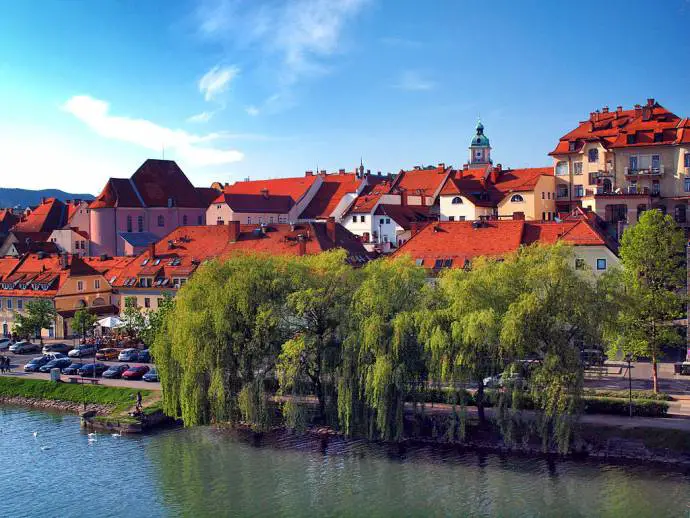February 15, 2018
Of course Ljubljana is the first city in Slovenia, and it’s pretty easy to lay out in objective terms why it’s ‘better’. But one can also do the same for London, Paris, New York, Tokyo, Hong Kong, and so, and that really doesn’t get us anywhere. A place doesn’t need to be the best anything to be a good home, and perhaps the best thing a town can do is to be true to itself. And so it is that many people move to Maribor after having lived in the capital sometime and find themselves chafing at first at the relatively small-town ways of Slovenia’ second biggest city, with a population of just over 90,000, as opposed to around 280,000 in the capital. But then things often start to improve, as they learn to live with some of Maribor’s more attractive features.
It’s cheaper, for one thing, thus giving more space to make mistakes and grow, and close enough to Ljubljana that if you need to make a visit there’s no need to pack an overnight bag. But why even go unless to see friends? Maribor has its own university and cultural scene going on, as well a vibrant sporting life, in addition to the river, vineyards and mountains. The weather is also better than in Ljubljana, with the capital known for its cloud-cover and fog. Maribor is also a well-connected city, with an airport that flies to Munich and Antwerp, and if you want more choice then its only around 80km from Graz, with flights all over Europe, and it's just a short drive across the border to Austria and Hungary.
The natural environment is another attraction, and Maribor has a real river running through it, with the Drava much wider and wilder than the Ljubljanica, and a tributary of the Danube. The River Darava now runs a number of hydroelectric power plants, with the force of its waters playing a key role in the city’s emergence as an industrial powerhouse in earlier years. The decline of that status is still felt in the local economy, although things are now looking up, with foreign investors in particular attracted by Maribor’s logistics, real estate, retail, IT, tourism and production facilities. The River Drava is also notable for Maribor Island, with a lido that has met the leisure and sporting needs of the population for decades.
Food and wine is never far from anyone’s thoughts in Slovenia, but this is especially true of Maribor. The city not only boasts the oldest vine in the world, but is the centre of more living traditions, and the ideal starting point for following many of the nearby wine roads. You don’t need to go far, either, as the city has two hills, Calvary Hill and Pyramid Hill, both of which are surrounded by vineyards. Notable events are the Old Vine Festival, held at the beginning of October, and St Martin’s Day, or Martinovanje, a celebration of new wine held in November.
With regard to food this part of Slovenia relies on sausage, pork and sauerkraut more than most, but there are plenty of artisanal producers working to expand the range and quality of what’s on offer, and a growing number of food and wine tours available to introduce visitors to some of the region’s specialities, old and new, as well as regular culinary events (see here for a calendar).
Maribor was the European Capital of Culture in 2012, with art and culture remaining an important part of the life of the city. This is seen in institutions such as the Slovene National Theatre Maribor and the theatre festival that takes place each autumn (the Maribor Theatre Festival, or Boršnikovo srečanje in Slovene). There is also the Narodni dom building in the centre of town, which presents over a thousand cultural events a year, including the Folkart International Folklore Festival, part of the acclaimed Lent Festival.
The Lent Festival, which has nothing to do with Easter, takes place in late June and early July. This three-week open-air festival offers music of all styles, along with theatrical performances, workshops and sports events, and attracts names and audiences from well beyond the country’s borders.
Moreover, as well as high art and state-sponsored projects, the city has a vibrant grass-roots scene, driven by motivated individuals who are working to create something new, to entertain, educate or enlighten. There are also a number of museums, such as the National Liberation Museum, which tells Maribor’s often troubled history, moving from the prosperous years between the two World Wars to the horrors of Nazi occupation in World War II, and the devastation of the Allied bombing raids, which destroyed almost half of the city.
Finally, Maribor’s location by the mountains means that its an ideal spot for skiing in the winter months, and hiking, biking and the like all year round.
For all these reasons, and more, Maribor is its own thing, different to Ljubljana and with charms that are still waiting to be discovered by visitors, and well worth taking a look at if you happen to be in the area.






